有史以来,《财富》只有一位商界领袖两度成为年度商业人物的榜首,他就是埃隆·马斯克(上一次是在2013年)。他的身上充满争议。有人称他火箭侠、钢铁侠、传统汽车工业的救世主,也有人称他为骗子、恶霸、以救世主自居的小人。
今年,《财富》为何再度选择了他?请阅读我们的这篇独家深度。通过复杂的马斯克,以及今年他获得的重大成就,可了解更广阔的2020年商业世界。
查看2020年《财富》年度商业人物完整榜单,以及未来更多榜单和深度商业报道,请关注“财富中文网”官方微博和微信,并下载安装《财富》官方App“财富Plus”,第一时间获得通知。
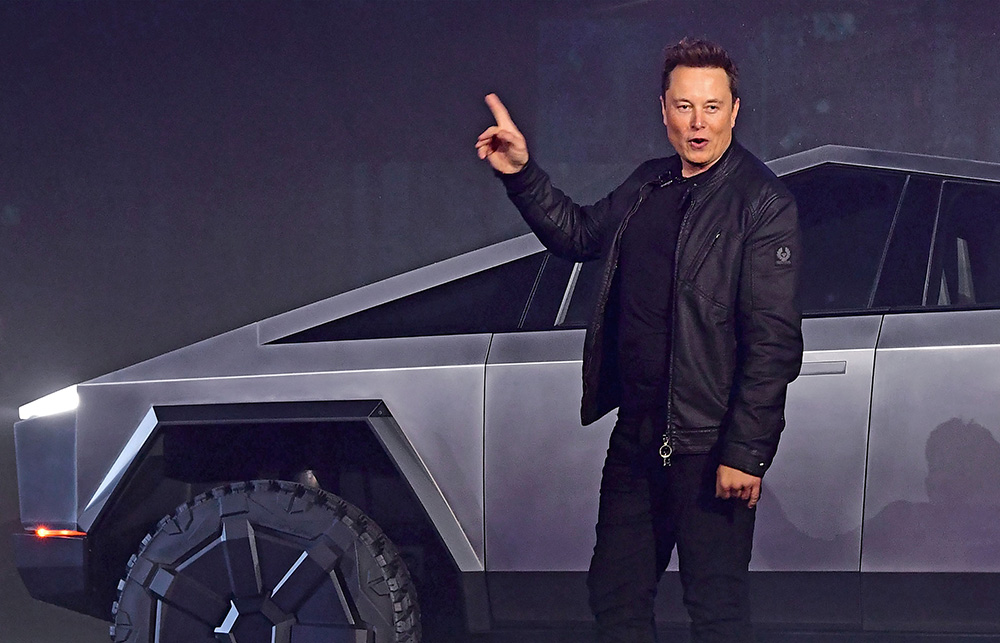
倒计时45分钟,一切都变得严肃起来。当然,一枚价值6,200万美元、208英尺(约63.3984米)高的火箭立在发射台上,即将发射到地球大气层之外,没有理由不严肃。
11月一个温和的星期天,佛罗里达州的美国国家航空航天局肯尼迪航天中心,技术人员都在紧张地检查注意事项。黄昏之后,太阳的温暖消散,发射现场的气氛变得清冷起来。
舱内,四位宇航员静静坐成一排等候,其中三位来自美国国家航空航天局,一位来自日本宇宙航空研究开发机构。飞船舱外则是承担运载任务的猎鹰9号(Falcon 9)火箭。飞船和火箭的制造商均为美国太空探索技术公司,简称SpaceX,总部位于洛杉矶地区,由埃隆·马斯克执掌。
本次发射由SpaceX和美国国家航空航天局合作,这种合作在过去十年中并不罕见,SpaceX已经用猎鹰火箭完成了100多次发射,还经常承担政府的发射任务。
然而这次有点不同寻常,SpaceX作为一家私营公司,被允许运送美国宇航员往返轨道。任务开始前不到一周,美国国家航空航天局的许可才正式下发。
发射台为39A,这也是尼尔·阿姆斯特朗、巴兹·奥尔德林和迈克尔·科林斯乘坐阿波罗11号离开地球前往太空的地方。如果本次任务成功,宇航员将前往国际空间站进行为期六个月的科学实验,从而能够进一步证明商业太空飞行的可行性。
倒计时44:55,一位男性发声打破了沉默。“发射小组已经做好进入、机械臂收回、装载推进剂和发射准备。”发射主任说。
倒计时1:47。加注燃料完成。伴随着轰鸣的嘶嘶声,火箭和飞船被巨大的白雾淹没,白雾是因为气态氧与海岸空气相遇而生成。
倒计时0:42。对讲机里噼啪响起声音:“准备发射。”舱内传出另一个声音:“这里是坚韧号。”也就是龙飞船的名字。“收到,‘发射。’”
3,2,1。火箭尾部化学物质燃烧发出刺耳的尖叫。震耳欲聋的轰鸣吞没了对讲机。“坚韧号升空!”雷鸣般的光柱冲向群星,地面上的一位目击者兴奋地宣称。“全人类对太空发起勇敢探索,这是地球引力是无法限制的。”
美国东部时间晚上8点09分,四名宇航员以17,000英里(约27,358.848千米)的时速飞向低地轨道,顺利完成了SpaceX的龙飞船的第一次飞行任务。
可能是怕感染新冠病毒,马斯克异常低调地并未公开露面,而是在推特上发布了新推文:一颗红心的表情。
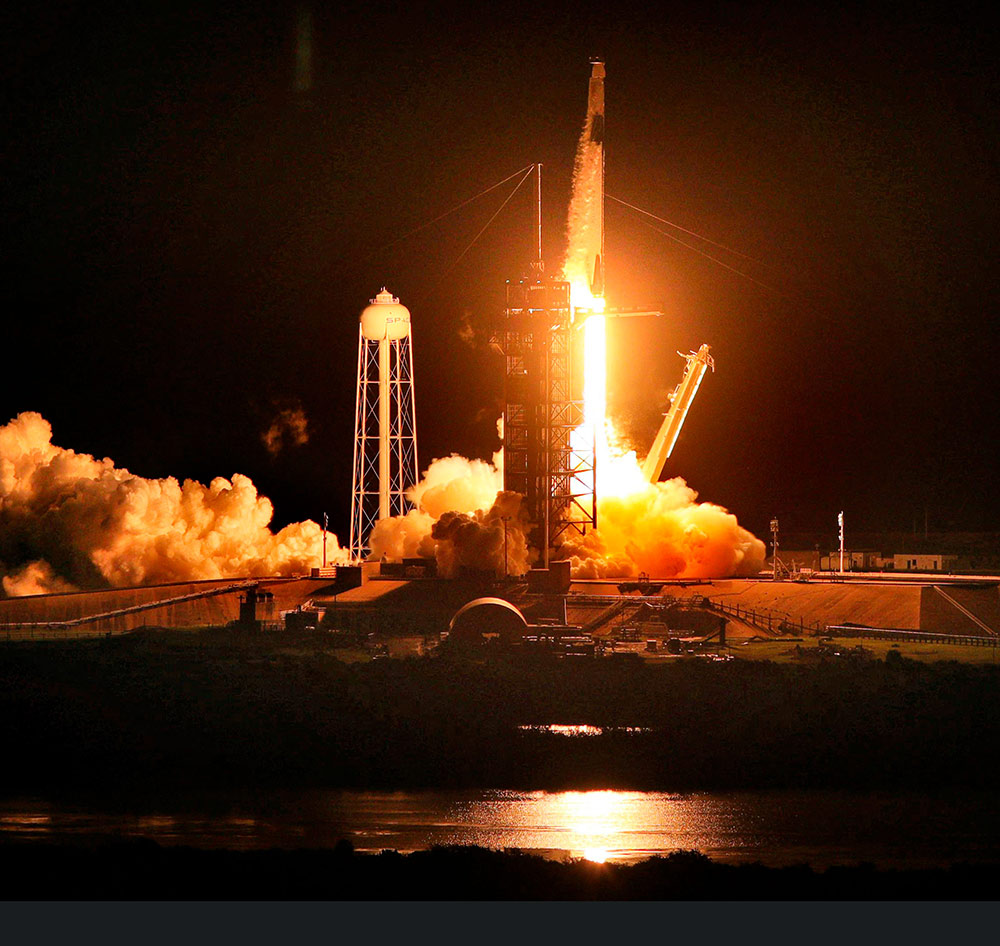
这只是埃隆·马斯克生命里普通的一天。
有些高管在业余时间喜欢打高尔夫球;还有些人喜欢阅读、冥想或远足。而马斯克的爱好则是把人送上太空——这还只是他的夜场。
现年49岁的马斯克是私人公司SpaceX的创始人及首席执行官,目前公司估值已经达到460亿美元,预计未来估值还会大涨,毕竟其愿景是去火星殖民。(复苏美国著名的太空计划?只是顺带而已。)
另外还有特斯拉,最近的市值已经达到5,200亿美元,成为全球价值最高的公司之一。其市值比美国汽车巨头通用汽车和福特加起来的五倍还要多。凭借着顽强的意志和恰到好处的经营才能,马斯克打造了电动汽车制造商和电池制造商,将整个汽车行业拉进21世纪,还吸引了全世界的投资者。
在过去三年里,特斯拉收入平均增长率为52%,最近公布已经连续第五个季度实现盈利。11月有消息称,特斯拉从12月1日起纳入标准普尔500指数(S&P 500),进一步提振了股价。
据彭博社报道,马斯克的个人净资产已经飙升至近1,280亿美元,成为仅次于亚马逊创始人杰夫·贝佐斯的全球第二大富豪,稍微领先比尔·盖茨。
马斯克在其他领域也建树颇多,他所创建的Boring Co.公司的目标是挖掘隧道以缓解城市交通拥堵。Neuralink努力实现可植入的脑机接口。他还联合创立并资助OpenAI,由于部分业务可能与特斯拉存在竞争而离开了董事会,OpenAI正开发对社会发展不存在威胁的“友好”人工智能。还有Hyperloop?只是科幻的交通概念,他决定向更大范围的技术社区开放源代码。
要记住,埃隆·马斯克每天也只有24小时,跟我们都一样。
只要马斯克可以完成以上成就里的任何一项,就都有充分的理由跻身《财富》年度商业人物。(事实上他确实做到过,2013年我们曾经称他为“三重威胁”。)尽管长期面临不少变数,马斯克还是在努力实现五大项目,没错,繁忙如此的埃隆·马斯克还在努力升级。他的梦想还远不只这些。
随便问任一行业的首席执行官,哪位首席执行官最激励他们,最常出现的答案就是马斯克的名字。他们说埃隆·马斯克是火箭侠,是钢铁侠,是罪恶传统汽车工业的救世主。他是雄心勃勃的企业家,又有足够的执行力把不可能变成可能。他是设计师、技术专家,多才多艺到无与伦比。他还是擅长颠覆的艺术家,保持惊人的热情,而且无所畏惧。
然而,如果问问这些高管,哪位首席执行官最让他们讨厌,马斯克的名字也排在第一位。在某些人看来,他是骗子,是恶霸,是以救世主自居的卑鄙小人,还从不接受批评。有人认为他是伪君子,虚伪做作,轻率浮夸,不适合带领人类走向未来。还有人说马斯克是纯熟玩弄规则的任务大师,也是无家的亿万富翁,把人们都当成傻瓜。
但最了解马斯克的人表示,真实情况介于两者之间。埃隆·马斯克很复杂,而且也只是人类。(最好别这么想。)通过复杂的马斯克,以及今年他获得的重大成就,我们能够了解更广阔的2020年商业世界。
“首脑”马斯克
一排排轿车按照社交距离间隔一字排开,每排24辆,共12排。正午的阳光照在银色、白色、蓝色和红色的引擎盖上熠熠生辉。每辆车都是崭新的特斯拉Model S。
你以为这是一家位于硅谷的21世纪的汽车电影院?当然不是。这是特斯拉位于加利福尼亚州弗里蒙特的工厂举办的“电池日”(Battery Day)活动。
在这个9月温暖的下午,司机们聚集于此,听埃隆·马斯克介绍公司今年的业绩,并借此机会了解特斯拉未来计划开发的新产品,包括很快就会与他们见面的赛车款Model S Plaid。这款汽车的命名并不是因为它与服装裁剪有关,而是为了致敬1987年的恶搞电影《太空炮弹》(Spaceballs)中宇宙飞船的最高速度。(没有人说马斯克没有幽默感。)
马斯克身穿一件带有图案的黑色T恤衫走上舞台时,人们从打开的车窗里大声欢呼,并举起拳头向他致敬。人们按下汽车喇叭迎接马斯克。特斯拉的首席执行官用开心的微笑回应。
他打量着面前的观众,咧嘴笑道:“大家好。所有人都坐在车里,这让我有点难以了解大家的想法,但我们只能这样做。”面对这种明显有些荒谬的场景,马斯克大笑起来。今年的活动正值新冠肺炎疫情期间,自然不同于去年在室内举行的有幻灯片展示的传统活动。
而且马斯克今年的心情明显好于去年,原因不言而喻。
2019年9月,特斯拉价格更高的车型销售低迷,特斯拉的子公司SolarCity生产的太阳能面板涉及多起火灾,导致公司被沃尔玛告上法庭(双方已经和解),而且中美之间的贸易摩擦升级可能影响其在上海郊区即将投入运营的制造工厂,在这一系列因素的影响下,特斯拉股价在9个月内下跌了三分之一。
当时,马斯克在台上没有发表激情澎湃的讲话,而是希望重新转换对话的内容:“这是极其糟糕的一年,但有许多好事正在发生。”
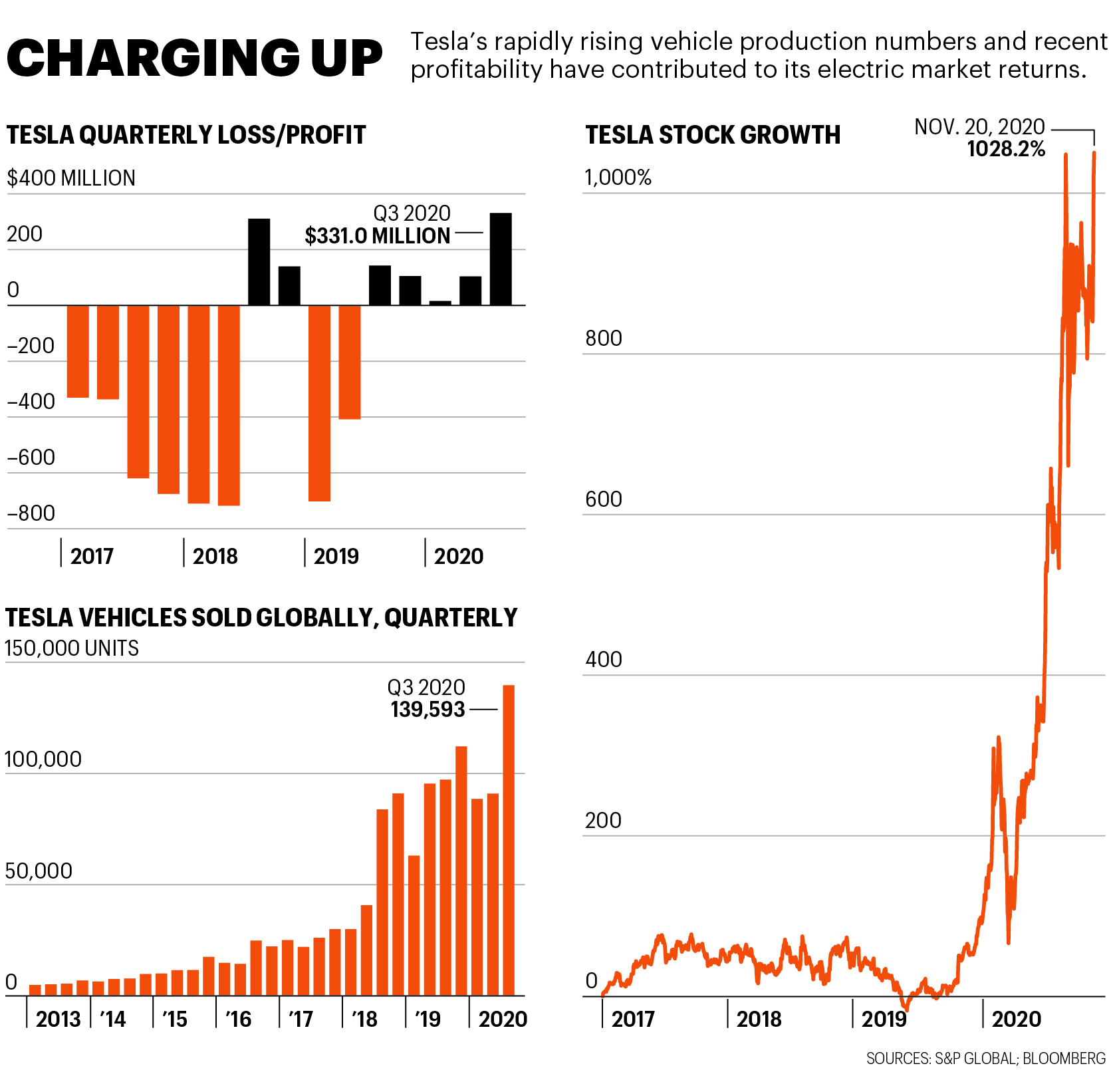
事实证明,这番话有些过于谨慎。今年,在马斯克对着坐在汽车里的听众们演讲时,特斯拉的股价在12个月内上涨了8倍,这要部分归功于特斯拉在8月的拆股。这个决定当时突然令投资者陷入疯狂。
而且,特斯拉还有更多的好消息。有报道称,特斯拉的合作伙伴松下将在位于里诺郊区的1号超级工厂追加投资1亿美元。随着上海工厂投产,特斯拉可以生产和交付的汽车数量创下了历史纪录。柏林工厂的施工也进展顺利。柏林工厂将进一步壮大特斯拉的产能,并帮助公司免受全球贸易摩擦的影响。
换言之,一切都在按照计划进行。特斯拉按照计划,在规模达到近2,000亿美元的全球电动汽车市场占据了约三分之一的份额,同时公司还在规模达数万亿美元的汽车市场中缓慢而稳定地发展壮大。
这是了不起的成就。经过多年来不计亏损地投资自动化、电池科学和其他专有技术,特斯拉形成了垂直一体化、软件导向和产品差异化的经营策略,这与传统汽车厂商截然不同。
特斯拉度过了财务上最艰难的阶段,获得了大量资本,使其有能力创建和发展一家新汽车厂商。在这个过程中,马斯克与做空者展开了漫长的对抗,并且在2017年至2019年期间,特斯拉准备开始扩大规模生产价格最低的Model 3车型时,公司一度濒临破产,但他带领公司度过了难关。
不过怀疑者依旧存在:据财务数据公司S3 Partners统计,特斯拉近6%的流通股被卖空,有高达220亿美元对赌特斯拉的资金到目前为止没有得到任何回报。
在硅谷,科技初创公司从起草一份商业计划书到融资,再到破产的例子不在少数。但像特斯拉、SpaceX、Boring Co.等公司,无论是其规模、发展壮大的速度,还是其收益,都以指数级猛增。
马斯克坚持表示,外界认为公司的创新是他的功劳,但实际上它们都来自公司的数万员工。尽管如此,这些大手笔的项目在遭遇诸多挑战之后能够继续正常进行,都要归功于马斯克的执行能力。(马斯克拒绝对此事发表意见。他说:“我又不想获奖或者得到别人的认可。”)

来自弗吉尼亚州麦克莱恩的铱星通讯公司的首席执行官马特·德施表示,他在12或13年前第一次见到马斯克,几年后SpaceX才成功完成首次火箭发射。今天,铱星通讯公司是SpaceX最大的商业客户,SpaceX通过8艘火箭为该公司发射了75颗卫星。
德施说:“无论我们在跟谁交谈或者谈论何种问题,马斯克总是可以分清轻重缓急。即使他在创建特斯拉和其他公司的时候,他依旧会参与每一个关键战略决策的制定。”
直接与马斯克共事是一种什么体验?马斯克旗下某家公司的一名前高管表示,你必须隐藏好自己的所有想法,因为马斯克会有礼貌地质问你。由于受到保密协议的约束,这位高管要求匿名。
如果你不做好充分准备,他一眼就能够看穿。他会记住你,而且你不会有好的结果。
这位高管说:“大多数时候,他都是房间里最聪明的人。他可以迅速并且全面地想清楚决策树,他总是能够走一步看十步,甚至十五步。他会闭上眼,仰起头,你会看到他的眼睛在飞快地旋转。他可能很长时间都保持这种状态。”
不过这种状态也可能会出错。
这位高管补充说:“马斯克认为自己是最聪明的。大多数情况确实如此,但凡事都有例外。他的错误就源于此。他不愿意听从更专业的人的意见。”
四面楚歌的马斯克
马斯克或许既聪明又精明,但他的个性有利也有弊,因而有时会妨碍他取得成功。
沃顿商学院的管理学副教授格雷戈里·谢伊说:“随着时间的推移,要想持续保持创新力,你就要保持坚韧而不是固执,你要乐观但又不能与现实过度脱节。”
马斯克所做的一切,无论对内还是对外,每一次失误都具有传奇色彩。有些人对此满不在乎,他们认为有怪癖的人往往都是天才。但有些人不会将他视为“天才就是天才”,因而不会很快忘记他的行为。马斯克有时会受到指责。每当此时,他就会成为舆论攻击的焦点。
11月中旬,美国新增新冠肺炎确诊病例数骇人听闻,并打破了各项纪录——仅本月前10天,新增新冠肺炎确诊病例已经达到100万例——马斯克在推特上向全世界宣布他或许也感染了新冠肺炎病毒。
这位已经公开漠视新冠肺炎数月的首席执行官在推特上发文称:“今天我做了四次新冠检测。同一名护士在同一台机器上用同样来自BD公司(一家领先的诊断工具提供商)的快速抗原测试技术对我进行检测。结果是两次阴性,两次阳性。这个太假了。”
马斯克的话确实很有道理:如果接受检测的人不是绝对浑身染毒,所谓的快速抗原检测就不准确。美国食品与药品管理局(Food and Drug Administration)于11月3日在致医疗服务业的一封信中也这么说,但措辞更专业一些。
加拿大的一名生物信息学科学家艾玛·贝尔,针对马斯克的推文在其公开帖子中也如是澄清,她在文中嘲讽这位首席执行官似乎不了解快速检测的原理,因此认为检测不起作用。
贝尔发表的这条推文迅速传播开来,其中写道:“太空凯伦臆造的是,自己未曾仔细地阅读关于检测的信息,就向自己的数百万粉丝吐苦水。”(“凯伦”是指那些无知的人,是对此类白人女性的蔑称。)
“太空凯伦”成了一个流行语,马斯克在网上已然成了“金发鲍勃”。但这只是马斯克发表的混乱的大型公关作品的最新力作,其中许多作品源自推特。
马斯克也像美国总统唐纳德·特朗普一样,将社交媒体网站作为自己向世界发声的扩音器,结果往往是喜忧参半。
他不仅发文多,而且口无遮拦,他的粉丝超过4,000万,他们不得不接受他大胆且常常是离奇的思维,他与竞争对手以及对特斯拉持有怀疑态度的人发生争执,而且,他所宣称的产品交付时间往往不切实际且未能实现。
一位特斯拉前高管称:“作为一名工程师,要通过深夜推文才能了解新的期限,这真是太有意思了。”
马斯克有时确实为自己在社交媒体上的言论付出了沉重的代价。
今年5月,他在推特上发文宣称特斯拉的股价“太高了”。仅仅几个字就使特斯拉的市值缩水140亿美元,其中包括马斯克自己在该公司持有的价值30亿美元的股份。
又比如,谁不知道他在美国证券交易监督委员会栽的跟头呢?2018年8月,马斯克在推特上发文称,他正在考虑将特斯拉私有化。“资金已经准备好。”他在文中写道。美国证交会迅速采取行动,指控这位首席执行官发出的“误导性推文”涉嫌证券欺诈。双方最终达成和解,马斯克须缴纳2,000万美元罚款,并至少三年不得担任特斯拉董事会的主席。
目前尚不清楚,马斯克的推特风暴是他的一种策略,还是他无法控制自己。
著名危机管理专家史密斯公司(Smith & Co.)的首席执行官朱迪·史密斯说:“我认为他可能确实在乎自己的名誉,但每一个人出名的方式不同。”
不管他的意图是什么,很显然,马斯克的公众形象经不起考验,因为很少有上市公司的首席执行官会这么做。在公司内部,无论好坏,他都以坦率著称。前员工称他们在其他任何地方从未遇到过如此冷酷的坦诚以及如此高要求、快节奏的氛围,这让众多高管都难以坚持太久。
尤其是在特斯拉,马斯克换掉的高管数量惊人。这些高管的离开并不全是出于自愿。
一位不愿意透露姓名的特斯拉前人力资源员工称:“当时公司有一种恐惧文化。任何人随时都有可能被解雇。马斯克才是最终的掌门人。他是国王,可以炒人,能够开除任何他不想要的人,全局由他掌控。”马斯克拥有特斯拉约20%的股份,公司董事会里有很多忠诚的支持者。
特斯拉最初管理团队的五人中,只有马斯克还留在公司。(特斯拉的前首席技术官JB·斯特劳贝尔在特斯拉工作了15年后,于2019年7月离职。)其他许多重要人物也已经离开,包括全球零售副总裁乔治·布兰肯希普、前运营和生产副总裁格雷格·瑞秋。每一个人的离开,都可能造成系统知识的流失。或许对公司吸引下一轮经验丰富的高管的能力也有一定的影响。特斯拉最近的首席法律顾问(12个月内有三人离职)之一托德·马隆曾经是马斯克的离婚律师。并不是说马隆没有资格担任首席法律顾问。但这确实提出了一些问题:随着特斯拉的增长提速,马斯克如今寻找一线候选人的范围有多广?
然而,在一次次对马斯克手下员工的采访中,没有人表示后悔加入他的任何一家公司。
里克·阿瓦洛斯说:“对我来说,这就像是得到了与艾迪·范·海伦一起演出的机会,但要进入埃隆·马斯克的公司,需要强大的意志力。”阿瓦洛斯曾经在特斯拉负责招聘,也曾经在马斯克与他人联合创立的人工智能初创公司Neuralink担任人才主管(他也是一位资深音乐家)。
马斯克的职业发展时间表
1971年
马斯克出生在南非比勒陀利亚,父母是埃罗尔和梅伊。他是三个孩子中年龄最大的一个:哥哥金巴尔是餐馆老板,妹妹托斯卡是电影制片人。
1989年
马斯克抵达加拿大,就读女王大学(Queen’s University)。
1992年
马斯克抵达美国,就读宾夕法尼亚大学(University of Pennsylvania)。
1995年
金巴尔和埃隆·马斯克兄弟在帕洛阿尔托成立了一家公司Zip2,向报社出售城市导航软件。1999年,他们以约3亿美元的价格将该公司卖给了康柏电脑(Compaq)。
1999年
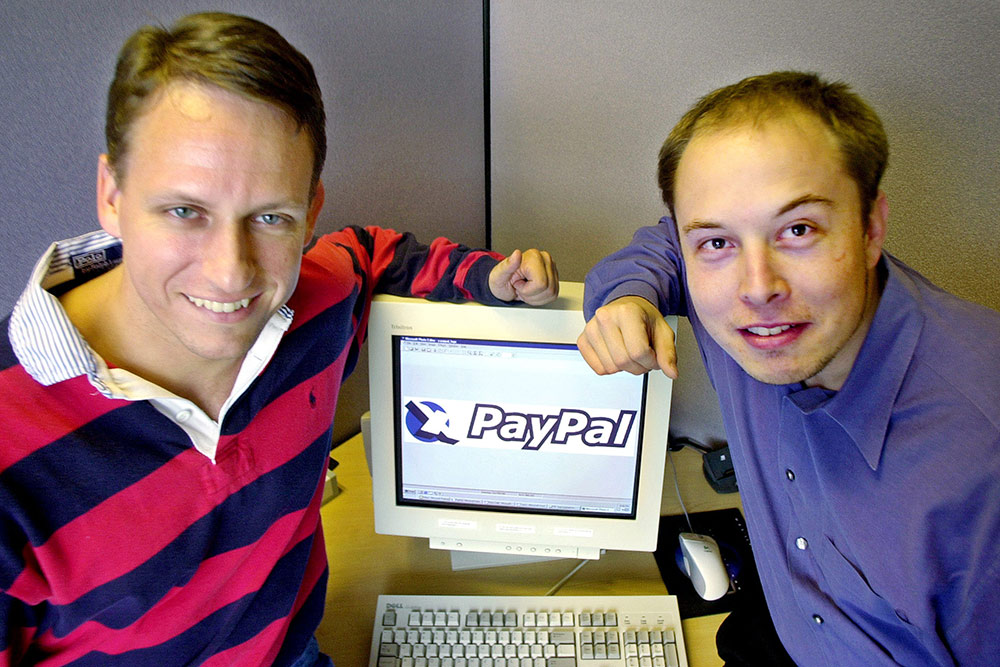
2002年
马斯克成立了SpaceX。当年晚些时候,eBay以15亿美元收购PayPal。马斯克从该笔交易中得到了约1.8亿美元。
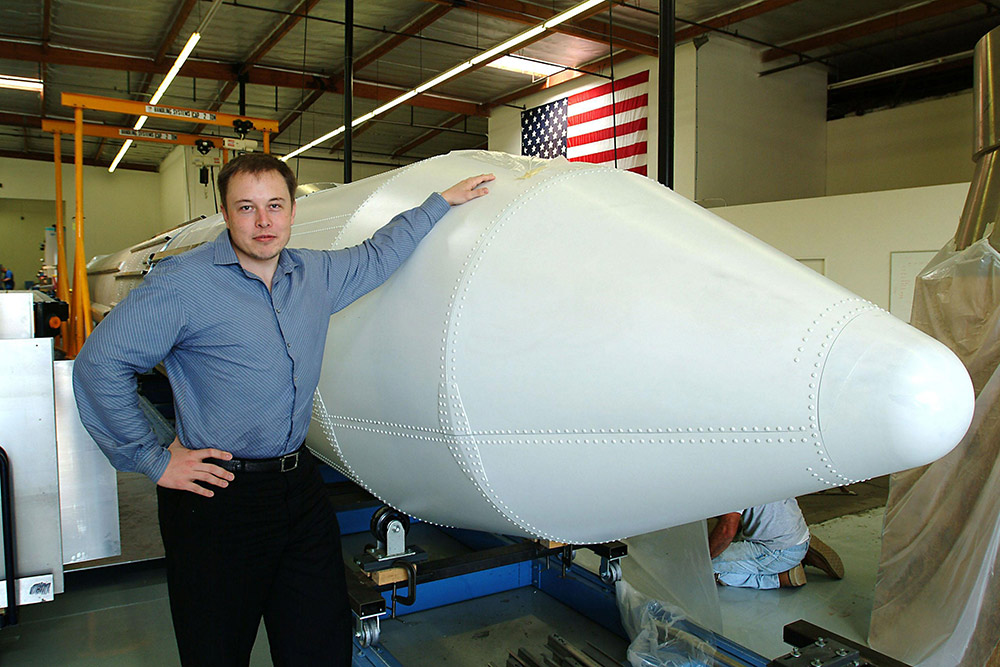
2004年
马斯克在电动汽车制造商特斯拉汽车公司投资650万美元,并担任公司董事会主席。
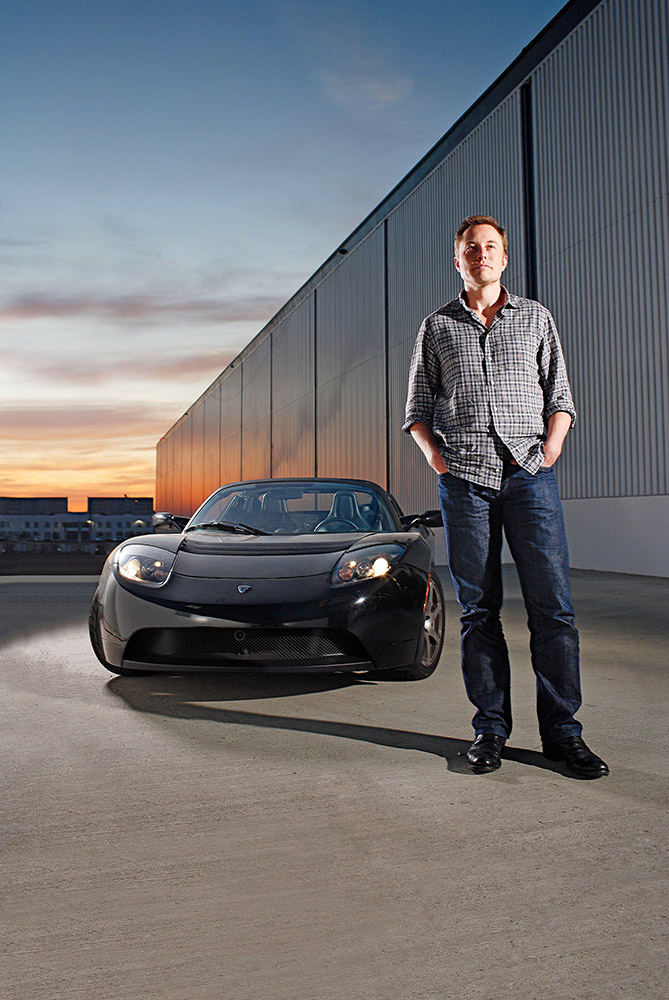
2006年
彼得·里沃和林登·里沃创建了太阳能面板安装公司SolarCity,他们的堂兄马斯克在该公司领投1,000万美元。
2012年SolarCity公司IPO时,林登·里沃(左)和马斯克接受媒体采访。

2008年
在特斯拉增加投资数百万美元后,马斯克成为该公司的首席执行官。当年晚些时候,SpaceX成功完成首次火箭发射。

2013年
马斯克公布了城市高速交通系统“Hyperloop”的发展计划。

2016年
特斯拉以26亿美元收购SolarCity。同一年,马斯克参与创建了脑机对接公司Neuralink,并成立了隧道施工公司Boring Co.。
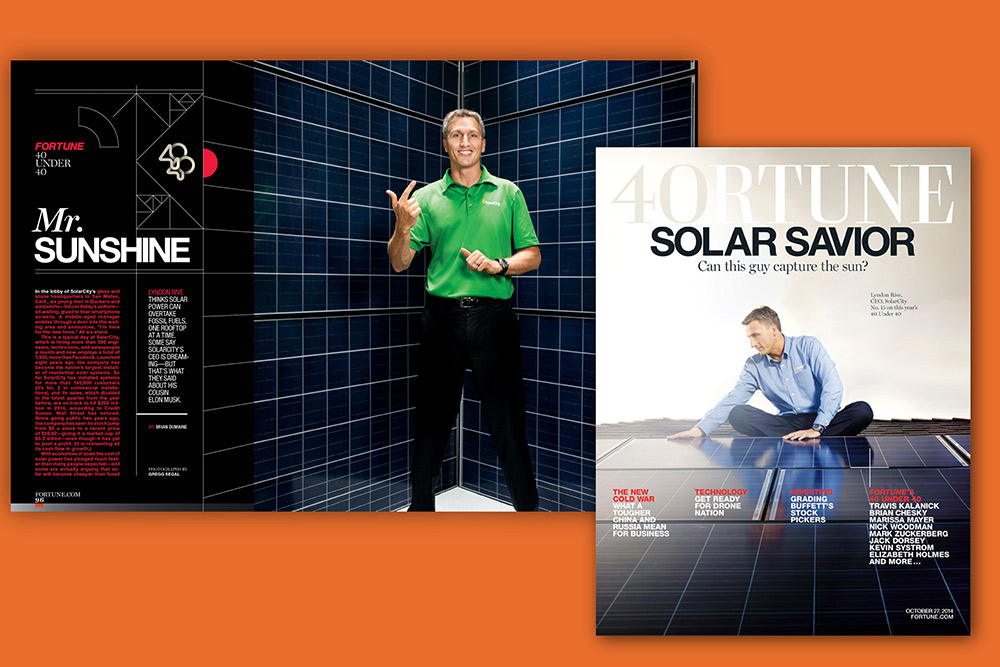
2018年
马斯克发推文称,他计划以每股420美元的价格将特斯拉私有化;他最终与美国证券交易委员会就欺诈指控达成和解,并辞去了董事长一职。一个月后,马斯克在接受播客采访时吸大麻,令股东和董事会成员一片哗然。
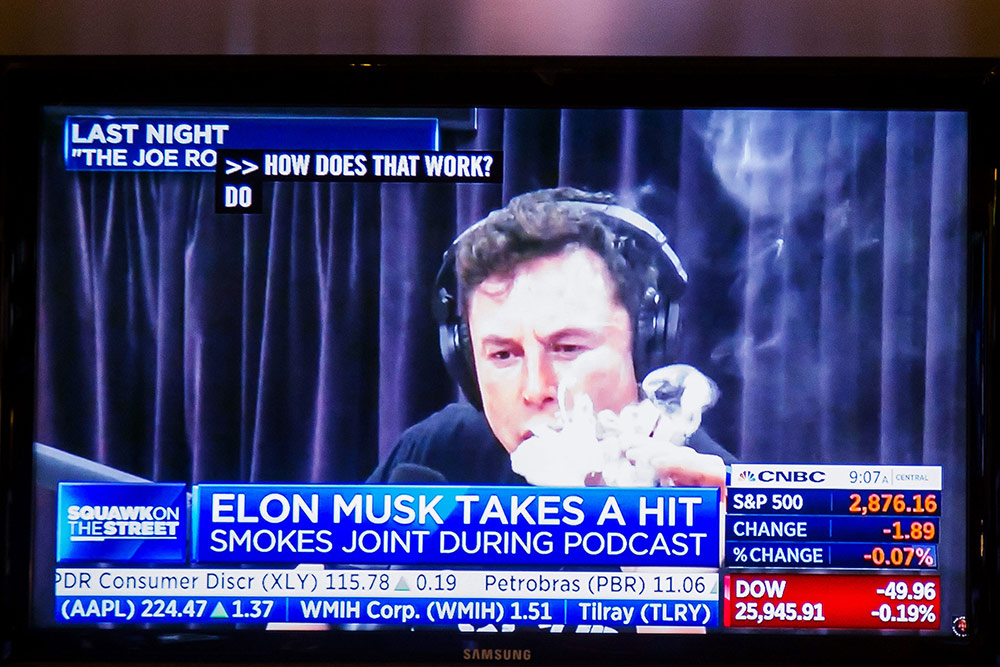
2020年11月
在连续五个季度盈利之后,特斯拉加入标准普尔500指数。
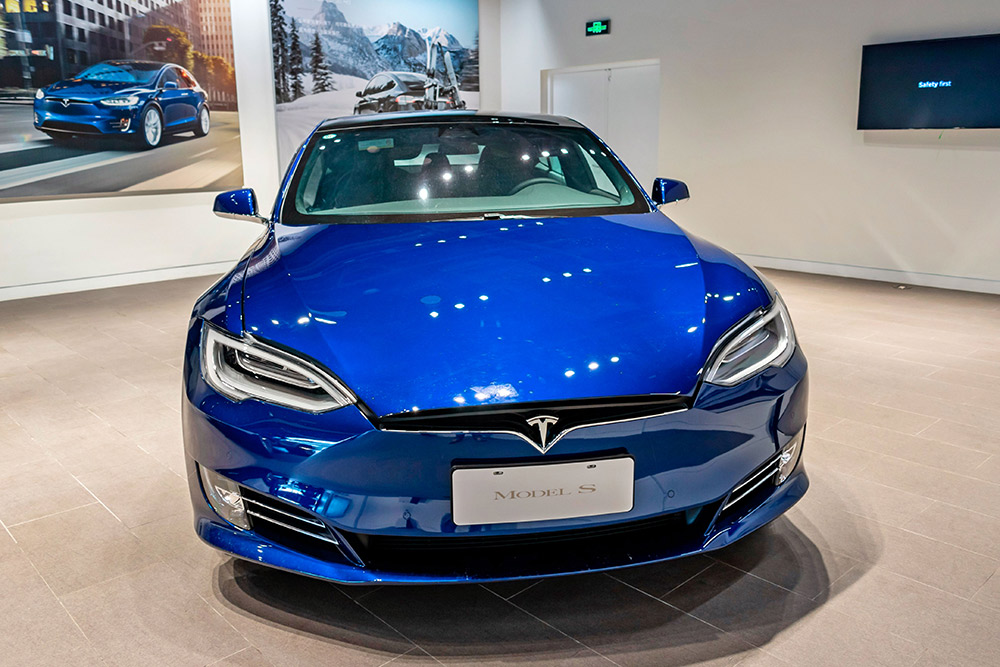
沃顿商学院的教授谢伊表示,马斯克对高管进行人员更迭的倾向,实际上可能会带来一些积极的附带效果。
他提到了一个术语“创造性摩擦”(creative abrasion)。这个词是由一位汽车设计师杰里·赫什伯格创造的,非常适合特斯拉。其中蕴含的理念是:当想法不断受到挑战,人与人之间以富有成效的方式发生冲突时,创意就会涌现。
谢伊教授说:“随着时间的推移,具有创造力的人的一个特点是,他们周围形成了创造性网络。”或许,马斯克保持创新的方式不仅是提出新想法,还包括引入新人,并将一些已经工作了一段时间的人淘汰出局。
不管有无战略,战略是什么,马斯克对创造性事业的追求是不懈的,而且他似乎对生活中的每件事情都有着同样的执着,不管他是对是错。当然,这一路上也招致了一些诋毁者,但也带来了忠实的粉丝。
一些特斯拉车主对马斯克的追捧尤为强烈,他们以对苹果公司(Apple)的产品那样的热情关注着特斯拉新产品的任何迹象。(甚至还有特斯拉牌的龙舌兰酒系列,在11月初的几个小时内就售罄。它一开始只是马斯克推特账号上的一个恶作剧。)
事实上,特斯拉迄今最大的挑战之一是,供应如何满足需求。
该公司多年来一直饱受生产延迟的困扰。为了解决这一问题,特斯拉在中国和欧洲等地的新制造工厂投入了大量资金,这些地区的客户等待新车交付的时间长达四个月。
德意志银行(Deutsche Bank)的三位分析师在最近的一份报告中写道:“我们认为,2021年将成为特斯拉的关键一年,因为它将在两家新工厂开始生产,并推出一系列新产品。”
马斯克表示,他预计特斯拉将实现2020年的生产目标:交付50万辆车。华尔街的分析家们似乎也同意这种说法。在2020年第三季度,尽管新冠疫情肆虐,特斯拉还是交付了139,300辆车,创下了历史纪录。(一如往常,马斯克不顾加州的禁令,重启了公司位于弗里蒙特的工厂,在居家隔离令正式解除之前一直在生产。5月11日,他在推特上写道:“如果有人被捕,我希望只有我一个人。”最终没有人被捕,但后来几名工人的新冠病毒检测结果呈阳性。)
特斯拉还有很多方面需要被证明,不仅仅是它显著提高产量的能力,还有实现全自动驾驶汽车承诺的能力。现在这一承诺也面临着延期。
然而,在投资者看来,正是这些雄心让这家只有17年历史的公司迅速超越传统汽车制造商。这正是马斯克的特点。
马斯克,年度商业人物
2012年,马斯克在《60分钟》(60 Minutes)节目中畅谈了他对于商业太空旅行的设想。
主持人斯科特·佩莱问这位企业家对宇航员尼尔·阿姆斯特朗和尤金·塞尔南的批评作何感想。这两位宇航员曾经到美国国会抗议将太空商业化,他们认为美国政府依赖私人航天器可能会威胁美国的太空主导地位。
马斯克眼含热泪,用颤抖的声音回答道:“这让我非常伤心。他们可是我心目中的英雄,所以我真的很难接受他们的批评。我希望他们能够来参观……看看我们付出的努力,我想这会让他们改变想法。”
时间来到2020年,显然美国国家航空航天局的火箭发射台变得异常繁忙,这很大程度上要归功于SpaceX。
马斯克或许没有时间改变两位宇航员的想法,因为阿姆斯特朗已于2012年去世,最后一位曾经在月球行走的人类塞尔南也在2017年去世,但他显然让使这些宇航员举世闻名的美国国家航空航天局接受了他的愿景。
在庆祝“坚韧号”火箭成功发射及其对SpaceX和美国国家航空航天局的里程碑意义时,马斯克在声明中心怀敬意,把目光投向了更遥远的地方:“这是一项巨大的荣誉,为我们重返月球、前往火星、最终帮助人类成为多星球物种的努力,树立了信心。”
听起来遥不可及?确实。但绝对不能低估这位造出酷炫的电动汽车,并把可回收火箭变成现实的富有争议的商人。虽然有很多批评的声音希望看到他失败,但我们很难对赌埃隆·马斯克本人和他冲出宇宙的雄心。
如果他像往常一样,按照自己的想法行事,他或许不止会在地球上留下自己的印记。他的传奇经历、缺点和他的一切或将在多个星球上得以流传。
如何成为像埃隆一样的领导者:四条关键的经验教训
我们采访了商业专家、观察马斯克的人,以及马斯克的前同事,是什么让马斯克成为一位如此高效而又不循规蹈矩的高管。
1.永远不要依据现状进行创新。
要解决最大的问题,不要从现有的基础设施入手,要摒弃一切,重新开始。真正的登月计划会重新考虑问题,而不是解决方案。一切问题都会迎刃而解。
2.雇佣有才华的人,挖掘他们的潜能。
你为马斯克工作时,要有这样的观念:创造性工程师可以解决任何问题,一切皆有可能。众所周知,这位高管让年轻工程师承担解决问题的重大责任,比如让他们在飞机库连夜解决复杂的火箭技术难题。
3.了解客户的问题。
马斯克坦率、诙谐的推文常常因为各种错误理由而成为新闻头条——“地区主管说了不礼貌的话”——但仔细观察他的表达方式,就会发现这是一位首席执行官在和他的客户随意闲聊。这种互动性让马斯克很受人们喜爱,因此,他偶尔也会提出非常规的解决方案。
4.言行举止很重要
尽管马斯克在网上的名声不太好,但最了解马斯克的人都说他非常有礼貌,彬彬有礼,即便面对巨大压力也是如此。“这是他父母的光荣。”一位与他长期共事的同事说——在洽谈交易时,他常常会一鸣惊人。(财富中文网)
本文另一版本登载于《财富》杂志2020年12月/2021年1月刊,标题为《年度商业人物:勇猛的埃隆》。
译者:Min, Feb
有史以来,《财富》只有一位商界领袖两度成为年度商业人物的榜首,他就是埃隆·马斯克(上一次是在2013年)。他的身上充满争议。有人称他火箭侠、钢铁侠、传统汽车工业的救世主,也有人称他为骗子、恶霸、以救世主自居的小人。
今年,《财富》为何再度选择了他?请阅读我们的这篇独家深度。通过复杂的马斯克,以及今年他获得的重大成就,可了解更广阔的2020年商业世界。
查看2020年《财富》年度商业人物完整榜单,以及未来更多榜单和深度商业报道,请关注“财富中文网”官方网站和微信,并下载安装《财富》官方App“财富Plus”,第一时间获得通知。
倒计时45分钟,一切都变得严肃起来。当然,一枚价值6,200万美元、208英尺(约63.3984米)高的火箭立在发射台上,即将发射到地球大气层之外,没有理由不严肃。
11月一个温和的星期天,佛罗里达州的美国国家航空航天局肯尼迪航天中心,技术人员都在紧张地检查注意事项。黄昏之后,太阳的温暖消散,发射现场的气氛变得清冷起来。
舱内,四位宇航员静静坐成一排等候,其中三位来自美国国家航空航天局,一位来自日本宇宙航空研究开发机构。飞船舱外则是承担运载任务的猎鹰9号(Falcon 9)火箭。飞船和火箭的制造商均为美国太空探索技术公司,简称SpaceX,总部位于洛杉矶地区,由埃隆·马斯克执掌。
本次发射由SpaceX和美国国家航空航天局合作,这种合作在过去十年中并不罕见,SpaceX已经用猎鹰火箭完成了100多次发射,还经常承担政府的发射任务。
然而这次有点不同寻常,SpaceX作为一家私营公司,被允许运送美国宇航员往返轨道。任务开始前不到一周,美国国家航空航天局的许可才正式下发。
发射台为39A,这也是尼尔·阿姆斯特朗、巴兹·奥尔德林和迈克尔·科林斯乘坐阿波罗11号离开地球前往太空的地方。如果本次任务成功,宇航员将前往国际空间站进行为期六个月的科学实验,从而能够进一步证明商业太空飞行的可行性。
倒计时44:55,一位男性发声打破了沉默。“发射小组已经做好进入、机械臂收回、装载推进剂和发射准备。”发射主任说。
倒计时1:47。加注燃料完成。伴随着轰鸣的嘶嘶声,火箭和飞船被巨大的白雾淹没,白雾是因为气态氧与海岸空气相遇而生成。
倒计时0:42。对讲机里噼啪响起声音:“准备发射。”舱内传出另一个声音:“这里是坚韧号。”也就是龙飞船的名字。“收到,‘发射。’”
3,2,1。火箭尾部化学物质燃烧发出刺耳的尖叫。震耳欲聋的轰鸣吞没了对讲机。“坚韧号升空!”雷鸣般的光柱冲向群星,地面上的一位目击者兴奋地宣称。“全人类对太空发起勇敢探索,这是地球引力是无法限制的。”
美国东部时间晚上8点09分,四名宇航员以17,000英里(约27,358.848千米)的时速飞向低地轨道,顺利完成了SpaceX的龙飞船的第一次飞行任务。
可能是怕感染新冠病毒,马斯克异常低调地并未公开露面,而是在推特上发布了新推文:一颗红心的表情。
这只是埃隆·马斯克生命里普通的一天。
有些高管在业余时间喜欢打高尔夫球;还有些人喜欢阅读、冥想或远足。而马斯克的爱好则是把人送上太空——这还只是他的夜场。
现年49岁的马斯克是私人公司SpaceX的创始人及首席执行官,目前公司估值已经达到460亿美元,预计未来估值还会大涨,毕竟其愿景是去火星殖民。(复苏美国著名的太空计划?只是顺带而已。)
另外还有特斯拉,最近的市值已经达到5,200亿美元,成为全球价值最高的公司之一。其市值比美国汽车巨头通用汽车和福特加起来的五倍还要多。凭借着顽强的意志和恰到好处的经营才能,马斯克打造了电动汽车制造商和电池制造商,将整个汽车行业拉进21世纪,还吸引了全世界的投资者。
在过去三年里,特斯拉收入平均增长率为52%,最近公布已经连续第五个季度实现盈利。11月有消息称,特斯拉从12月1日起纳入标准普尔500指数(S&P 500),进一步提振了股价。
据彭博社报道,马斯克的个人净资产已经飙升至近1,280亿美元,成为仅次于亚马逊创始人杰夫·贝佐斯的全球第二大富豪,稍微领先比尔·盖茨。
马斯克在其他领域也建树颇多,他所创建的Boring Co.公司的目标是挖掘隧道以缓解城市交通拥堵。Neuralink努力实现可植入的脑机接口。他还联合创立并资助OpenAI,由于部分业务可能与特斯拉存在竞争而离开了董事会,OpenAI正开发对社会发展不存在威胁的“友好”人工智能。还有Hyperloop?只是科幻的交通概念,他决定向更大范围的技术社区开放源代码。
要记住,埃隆·马斯克每天也只有24小时,跟我们都一样。
只要马斯克可以完成以上成就里的任何一项,就都有充分的理由跻身《财富》年度商业人物。(事实上他确实做到过,2013年我们曾经称他为“三重威胁”。)尽管长期面临不少变数,马斯克还是在努力实现五大项目,没错,繁忙如此的埃隆·马斯克还在努力升级。他的梦想还远不只这些。
随便问任一行业的首席执行官,哪位首席执行官最激励他们,最常出现的答案就是马斯克的名字。他们说埃隆·马斯克是火箭侠,是钢铁侠,是罪恶传统汽车工业的救世主。他是雄心勃勃的企业家,又有足够的执行力把不可能变成可能。他是设计师、技术专家,多才多艺到无与伦比。他还是擅长颠覆的艺术家,保持惊人的热情,而且无所畏惧。
然而,如果问问这些高管,哪位首席执行官最让他们讨厌,马斯克的名字也排在第一位。在某些人看来,他是骗子,是恶霸,是以救世主自居的卑鄙小人,还从不接受批评。有人认为他是伪君子,虚伪做作,轻率浮夸,不适合带领人类走向未来。还有人说马斯克是纯熟玩弄规则的任务大师,也是无家的亿万富翁,把人们都当成傻瓜。
但最了解马斯克的人表示,真实情况介于两者之间。埃隆·马斯克很复杂,而且也只是人类。(最好别这么想。)通过复杂的马斯克,以及今年他获得的重大成就,我们能够了解更广阔的2020年商业世界。
“首脑”马斯克
一排排轿车按照社交距离间隔一字排开,每排24辆,共12排。正午的阳光照在银色、白色、蓝色和红色的引擎盖上熠熠生辉。每辆车都是崭新的特斯拉Model S。
你以为这是一家位于硅谷的21世纪的汽车电影院?当然不是。这是特斯拉位于加利福尼亚州弗里蒙特的工厂举办的“电池日”(Battery Day)活动。
在这个9月温暖的下午,司机们聚集于此,听埃隆·马斯克介绍公司今年的业绩,并借此机会了解特斯拉未来计划开发的新产品,包括很快就会与他们见面的赛车款Model S Plaid。这款汽车的命名并不是因为它与服装裁剪有关,而是为了致敬1987年的恶搞电影《太空炮弹》(Spaceballs)中宇宙飞船的最高速度。(没有人说马斯克没有幽默感。)
马斯克身穿一件带有图案的黑色T恤衫走上舞台时,人们从打开的车窗里大声欢呼,并举起拳头向他致敬。人们按下汽车喇叭迎接马斯克。特斯拉的首席执行官用开心的微笑回应。
他打量着面前的观众,咧嘴笑道:“大家好。所有人都坐在车里,这让我有点难以了解大家的想法,但我们只能这样做。”面对这种明显有些荒谬的场景,马斯克大笑起来。今年的活动正值新冠肺炎疫情期间,自然不同于去年在室内举行的有幻灯片展示的传统活动。
而且马斯克今年的心情明显好于去年,原因不言而喻。
2019年9月,特斯拉价格更高的车型销售低迷,特斯拉的子公司SolarCity生产的太阳能面板涉及多起火灾,导致公司被沃尔玛告上法庭(双方已经和解),而且中美之间的贸易摩擦升级可能影响其在上海郊区即将投入运营的制造工厂,在这一系列因素的影响下,特斯拉股价在9个月内下跌了三分之一。
当时,马斯克在台上没有发表激情澎湃的讲话,而是希望重新转换对话的内容:“这是极其糟糕的一年,但有许多好事正在发生。”
事实证明,这番话有些过于谨慎。今年,在马斯克对着坐在汽车里的听众们演讲时,特斯拉的股价在12个月内上涨了8倍,这要部分归功于特斯拉在8月的拆股。这个决定当时突然令投资者陷入疯狂。
而且,特斯拉还有更多的好消息。有报道称,特斯拉的合作伙伴松下将在位于里诺郊区的1号超级工厂追加投资1亿美元。随着上海工厂投产,特斯拉可以生产和交付的汽车数量创下了历史纪录。柏林工厂的施工也进展顺利。柏林工厂将进一步壮大特斯拉的产能,并帮助公司免受全球贸易摩擦的影响。
换言之,一切都在按照计划进行。特斯拉按照计划,在规模达到近2,000亿美元的全球电动汽车市场占据了约三分之一的份额,同时公司还在规模达数万亿美元的汽车市场中缓慢而稳定地发展壮大。
这是了不起的成就。经过多年来不计亏损地投资自动化、电池科学和其他专有技术,特斯拉形成了垂直一体化、软件导向和产品差异化的经营策略,这与传统汽车厂商截然不同。
特斯拉度过了财务上最艰难的阶段,获得了大量资本,使其有能力创建和发展一家新汽车厂商。在这个过程中,马斯克与做空者展开了漫长的对抗,并且在2017年至2019年期间,特斯拉准备开始扩大规模生产价格最低的Model 3车型时,公司一度濒临破产,但他带领公司度过了难关。
不过怀疑者依旧存在:据财务数据公司S3 Partners统计,特斯拉近6%的流通股被卖空,有高达220亿美元对赌特斯拉的资金到目前为止没有得到任何回报。
在硅谷,科技初创公司从起草一份商业计划书到融资,再到破产的例子不在少数。但像特斯拉、SpaceX、Boring Co.等公司,无论是其规模、发展壮大的速度,还是其收益,都以指数级猛增。
马斯克坚持表示,外界认为公司的创新是他的功劳,但实际上它们都来自公司的数万员工。尽管如此,这些大手笔的项目在遭遇诸多挑战之后能够继续正常进行,都要归功于马斯克的执行能力。(马斯克拒绝对此事发表意见。他说:“我又不想获奖或者得到别人的认可。”)
来自弗吉尼亚州麦克莱恩的铱星通讯公司的首席执行官马特·德施表示,他在12或13年前第一次见到马斯克,几年后SpaceX才成功完成首次火箭发射。今天,铱星通讯公司是SpaceX最大的商业客户,SpaceX通过8艘火箭为该公司发射了75颗卫星。
德施说:“无论我们在跟谁交谈或者谈论何种问题,马斯克总是可以分清轻重缓急。即使他在创建特斯拉和其他公司的时候,他依旧会参与每一个关键战略决策的制定。”
直接与马斯克共事是一种什么体验?马斯克旗下某家公司的一名前高管表示,你必须隐藏好自己的所有想法,因为马斯克会有礼貌地质问你。由于受到保密协议的约束,这位高管要求匿名。
如果你不做好充分准备,他一眼就能够看穿。他会记住你,而且你不会有好的结果。
这位高管说:“大多数时候,他都是房间里最聪明的人。他可以迅速并且全面地想清楚决策树,他总是能够走一步看十步,甚至十五步。他会闭上眼,仰起头,你会看到他的眼睛在飞快地旋转。他可能很长时间都保持这种状态。”
不过这种状态也可能会出错。
这位高管补充说:“马斯克认为自己是最聪明的。大多数情况确实如此,但凡事都有例外。他的错误就源于此。他不愿意听从更专业的人的意见。”
四面楚歌的马斯克
马斯克或许既聪明又精明,但他的个性有利也有弊,因而有时会妨碍他取得成功。
沃顿商学院的管理学副教授格雷戈里·谢伊说:“随着时间的推移,要想持续保持创新力,你就要保持坚韧而不是固执,你要乐观但又不能与现实过度脱节。”
马斯克所做的一切,无论对内还是对外,每一次失误都具有传奇色彩。有些人对此满不在乎,他们认为有怪癖的人往往都是天才。但有些人不会将他视为“天才就是天才”,因而不会很快忘记他的行为。马斯克有时会受到指责。每当此时,他就会成为舆论攻击的焦点。
11月中旬,美国新增新冠肺炎确诊病例数骇人听闻,并打破了各项纪录——仅本月前10天,新增新冠肺炎确诊病例已经达到100万例——马斯克在推特上向全世界宣布他或许也感染了新冠肺炎病毒。
这位已经公开漠视新冠肺炎数月的首席执行官在推特上发文称:“今天我做了四次新冠检测。同一名护士在同一台机器上用同样来自BD公司(一家领先的诊断工具提供商)的快速抗原测试技术对我进行检测。结果是两次阴性,两次阳性。这个太假了。”
马斯克的话确实很有道理:如果接受检测的人不是绝对浑身染毒,所谓的快速抗原检测就不准确。美国食品与药品管理局(Food and Drug Administration)于11月3日在致医疗服务业的一封信中也这么说,但措辞更专业一些。
加拿大的一名生物信息学科学家艾玛·贝尔,针对马斯克的推文在其公开帖子中也如是澄清,她在文中嘲讽这位首席执行官似乎不了解快速检测的原理,因此认为检测不起作用。
贝尔发表的这条推文迅速传播开来,其中写道:“太空凯伦臆造的是,自己未曾仔细地阅读关于检测的信息,就向自己的数百万粉丝吐苦水。”(“凯伦”是指那些无知的人,是对此类白人女性的蔑称。)
“太空凯伦”成了一个流行语,马斯克在网上已然成了“金发鲍勃”。但这只是马斯克发表的混乱的大型公关作品的最新力作,其中许多作品源自推特。
马斯克也像美国总统唐纳德·特朗普一样,将社交媒体网站作为自己向世界发声的扩音器,结果往往是喜忧参半。
他不仅发文多,而且口无遮拦,他的粉丝超过4,000万,他们不得不接受他大胆且常常是离奇的思维,他与竞争对手以及对特斯拉持有怀疑态度的人发生争执,而且,他所宣称的产品交付时间往往不切实际且未能实现。
一位特斯拉前高管称:“作为一名工程师,要通过深夜推文才能了解新的期限,这真是太有意思了。”
马斯克有时确实为自己在社交媒体上的言论付出了沉重的代价。
今年5月,他在推特上发文宣称特斯拉的股价“太高了”。仅仅几个字就使特斯拉的市值缩水140亿美元,其中包括马斯克自己在该公司持有的价值30亿美元的股份。
又比如,谁不知道他在美国证券交易监督委员会栽的跟头呢?2018年8月,马斯克在推特上发文称,他正在考虑将特斯拉私有化。“资金已经准备好。”他在文中写道。美国证交会迅速采取行动,指控这位首席执行官发出的“误导性推文”涉嫌证券欺诈。双方最终达成和解,马斯克须缴纳2,000万美元罚款,并至少三年不得担任特斯拉董事会的主席。
目前尚不清楚,马斯克的推特风暴是他的一种策略,还是他无法控制自己。
著名危机管理专家史密斯公司(Smith & Co.)的首席执行官朱迪·史密斯说:“我认为他可能确实在乎自己的名誉,但每一个人出名的方式不同。”
不管他的意图是什么,很显然,马斯克的公众形象经不起考验,因为很少有上市公司的首席执行官会这么做。在公司内部,无论好坏,他都以坦率著称。前员工称他们在其他任何地方从未遇到过如此冷酷的坦诚以及如此高要求、快节奏的氛围,这让众多高管都难以坚持太久。
尤其是在特斯拉,马斯克换掉的高管数量惊人。这些高管的离开并不全是出于自愿。
一位不愿意透露姓名的特斯拉前人力资源员工称:“当时公司有一种恐惧文化。任何人随时都有可能被解雇。马斯克才是最终的掌门人。他是国王,可以炒人,能够开除任何他不想要的人,全局由他掌控。”马斯克拥有特斯拉约20%的股份,公司董事会里有很多忠诚的支持者。
特斯拉最初管理团队的五人中,只有马斯克还留在公司。(特斯拉的前首席技术官JB·斯特劳贝尔在特斯拉工作了15年后,于2019年7月离职。)其他许多重要人物也已经离开,包括全球零售副总裁乔治·布兰肯希普、前运营和生产副总裁格雷格·瑞秋。每一个人的离开,都可能造成系统知识的流失。或许对公司吸引下一轮经验丰富的高管的能力也有一定的影响。特斯拉最近的首席法律顾问(12个月内有三人离职)之一托德·马隆曾经是马斯克的离婚律师。并不是说马隆没有资格担任首席法律顾问。但这确实提出了一些问题:随着特斯拉的增长提速,马斯克如今寻找一线候选人的范围有多广?
然而,在一次次对马斯克手下员工的采访中,没有人表示后悔加入他的任何一家公司。
里克·阿瓦洛斯说:“对我来说,这就像是得到了与艾迪·范·海伦一起演出的机会,但要进入埃隆·马斯克的公司,需要强大的意志力。”阿瓦洛斯曾经在特斯拉负责招聘,也曾经在马斯克与他人联合创立的人工智能初创公司Neuralink担任人才主管(他也是一位资深音乐家)。
马斯克的职业发展时间表
1971年
马斯克出生在南非比勒陀利亚,父母是埃罗尔和梅伊。他是三个孩子中年龄最大的一个:哥哥金巴尔是餐馆老板,妹妹托斯卡是电影制片人。
1989年
马斯克抵达加拿大,就读女王大学(Queen’s University)。
1992年
马斯克抵达美国,就读宾夕法尼亚大学(University of Pennsylvania)。
1995年
金巴尔和埃隆·马斯克兄弟在帕洛阿尔托成立了一家公司Zip2,向报社出售城市导航软件。1999年,他们以约3亿美元的价格将该公司卖给了康柏电脑(Compaq)。
1999年
马斯克创建了早期的在线银行X.com。次年,该公司与PayPal的母公司Confinity合并。Confinity的创始人有彼得·蒂尔、马克思·莱文奇恩和卢克·诺塞克等。
2002年
马斯克成立了SpaceX。当年晚些时候,eBay以15亿美元收购PayPal。马斯克从该笔交易中得到了约1.8亿美元。
2004年
马斯克在电动汽车制造商特斯拉汽车公司投资650万美元,并担任公司董事会主席。
2006年
彼得·里沃和林登·里沃创建了太阳能面板安装公司SolarCity,他们的堂兄马斯克在该公司领投1,000万美元。2012年SolarCity公司IPO时,林登·里沃(左)和马斯克接受媒体采访。
2008年
在特斯拉增加投资数百万美元后,马斯克成为该公司的首席执行官。当年晚些时候,SpaceX成功完成首次火箭发射。
2013年
马斯克公布了城市高速交通系统“Hyperloop”的发展计划。
2016年
特斯拉以26亿美元收购SolarCity。同一年,马斯克参与创建了脑机对接公司Neuralink,并成立了隧道施工公司Boring Co.。
2018年
马斯克发推文称,他计划以每股420美元的价格将特斯拉私有化;他最终与美国证券交易委员会就欺诈指控达成和解,并辞去了董事长一职。一个月后,马斯克在接受播客采访时吸大麻,令股东和董事会成员一片哗然。
2020年11月
在连续五个季度盈利之后,特斯拉加入标准普尔500指数。
沃顿商学院的教授谢伊表示,马斯克对高管进行人员更迭的倾向,实际上可能会带来一些积极的附带效果。
他提到了一个术语“创造性摩擦”(creative abrasion)。这个词是由一位汽车设计师杰里·赫什伯格创造的,非常适合特斯拉。其中蕴含的理念是:当想法不断受到挑战,人与人之间以富有成效的方式发生冲突时,创意就会涌现。
谢伊教授说:“随着时间的推移,具有创造力的人的一个特点是,他们周围形成了创造性网络。”或许,马斯克保持创新的方式不仅是提出新想法,还包括引入新人,并将一些已经工作了一段时间的人淘汰出局。
不管有无战略,战略是什么,马斯克对创造性事业的追求是不懈的,而且他似乎对生活中的每件事情都有着同样的执着,不管他是对是错。当然,这一路上也招致了一些诋毁者,但也带来了忠实的粉丝。
一些特斯拉车主对马斯克的追捧尤为强烈,他们以对苹果公司(Apple)的产品那样的热情关注着特斯拉新产品的任何迹象。(甚至还有特斯拉牌的龙舌兰酒系列,在11月初的几个小时内就售罄。它一开始只是马斯克推特账号上的一个恶作剧。)
事实上,特斯拉迄今最大的挑战之一是,供应如何满足需求。
该公司多年来一直饱受生产延迟的困扰。为了解决这一问题,特斯拉在中国和欧洲等地的新制造工厂投入了大量资金,这些地区的客户等待新车交付的时间长达四个月。
德意志银行(Deutsche Bank)的三位分析师在最近的一份报告中写道:“我们认为,2021年将成为特斯拉的关键一年,因为它将在两家新工厂开始生产,并推出一系列新产品。”
马斯克表示,他预计特斯拉将实现2020年的生产目标:交付50万辆车。华尔街的分析家们似乎也同意这种说法。在2020年第三季度,尽管新冠疫情肆虐,特斯拉还是交付了139,300辆车,创下了历史纪录。(一如往常,马斯克不顾加州的禁令,重启了公司位于弗里蒙特的工厂,在居家隔离令正式解除之前一直在生产。5月11日,他在推特上写道:“如果有人被捕,我希望只有我一个人。”最终没有人被捕,但后来几名工人的新冠病毒检测结果呈阳性。)
特斯拉还有很多方面需要被证明,不仅仅是它显著提高产量的能力,还有实现全自动驾驶汽车承诺的能力。现在这一承诺也面临着延期。
然而,在投资者看来,正是这些雄心让这家只有17年历史的公司迅速超越传统汽车制造商。这正是马斯克的特点。
马斯克,年度商业人物
2012年,马斯克在《60分钟》(60 Minutes)节目中畅谈了他对于商业太空旅行的设想。
主持人斯科特·佩莱问这位企业家对宇航员尼尔·阿姆斯特朗和尤金·塞尔南的批评作何感想。这两位宇航员曾经到美国国会抗议将太空商业化,他们认为美国政府依赖私人航天器可能会威胁美国的太空主导地位。
马斯克眼含热泪,用颤抖的声音回答道:“这让我非常伤心。他们可是我心目中的英雄,所以我真的很难接受他们的批评。我希望他们能够来参观……看看我们付出的努力,我想这会让他们改变想法。”
时间来到2020年,显然美国国家航空航天局的火箭发射台变得异常繁忙,这很大程度上要归功于SpaceX。
马斯克或许没有时间改变两位宇航员的想法,因为阿姆斯特朗已于2012年去世,最后一位曾经在月球行走的人类塞尔南也在2017年去世,但他显然让使这些宇航员举世闻名的美国国家航空航天局接受了他的愿景。
在庆祝“坚韧号”火箭成功发射及其对SpaceX和美国国家航空航天局的里程碑意义时,马斯克在声明中心怀敬意,把目光投向了更遥远的地方:“这是一项巨大的荣誉,为我们重返月球、前往火星、最终帮助人类成为多星球物种的努力,树立了信心。”
听起来遥不可及?确实。但绝对不能低估这位造出酷炫的电动汽车,并把可回收火箭变成现实的富有争议的商人。虽然有很多批评的声音希望看到他失败,但我们很难对赌埃隆·马斯克本人和他冲出宇宙的雄心。
如果他像往常一样,按照自己的想法行事,他或许不止会在地球上留下自己的印记。他的传奇经历、缺点和他的一切或将在多个星球上得以流传。
如何成为像埃隆一样的领导者:四条关键的经验教训
我们采访了商业专家、观察马斯克的人,以及马斯克的前同事,是什么让马斯克成为一位如此高效而又不循规蹈矩的高管。
1.永远不要依据现状进行创新。
要解决最大的问题,不要从现有的基础设施入手,要摒弃一切,重新开始。真正的登月计划会重新考虑问题,而不是解决方案。一切问题都会迎刃而解。
2.雇佣有才华的人,挖掘他们的潜能。
你为马斯克工作时,要有这样的观念:创造性工程师可以解决任何问题,一切皆有可能。众所周知,这位高管让年轻工程师承担解决问题的重大责任,比如让他们在飞机库连夜解决复杂的火箭技术难题。
3.了解客户的问题。
马斯克坦率、诙谐的推文常常因为各种错误理由而成为新闻头条——“地区主管说了不礼貌的话”——但仔细观察他的表达方式,就会发现这是一位首席执行官在和他的客户随意闲聊。这种互动性让马斯克很受人们喜爱,因此,他偶尔也会提出非常规的解决方案。
4.言行举止很重要
尽管马斯克在网上的名声不太好,但最了解马斯克的人都说他非常有礼貌,彬彬有礼,即便面对巨大压力也是如此。“这是他父母的光荣。”一位与他长期共事的同事说——在洽谈交易时,他常常会一鸣惊人。(财富中文网)
本文另一版本登载于《财富》杂志2020年12月/2021年1月刊,标题为《年度商业人物:勇猛的埃隆》。
译者:Min, Feb
THINGS GET SERIOUS inside the 45-minute mark. That is a relative term, of course, because there is nothing unserious about placing a $62 million, 208-foot-tall rocket on a launchpad with plans to send it beyond Earth’s atmosphere. It is a balmy Sunday in November. NASA’s Kennedy Space Center in Florida teems with technicians nervously running through checklists. Nightfall has come and gone, and the disappearance of the sun’s warm hues lend the proceedings a clinical cast. Four astronauts—three from NASA; one from JAXA, the Japanese space agency—serenely sit in a row inside a Dragon spacecraft, which is in turn perched atop a Falcon 9 rocket that will carry it. Both are manufactured by Space Exploration Technologies Corp., otherwise known as SpaceX, the L.A.-area aerospace company led by Elon Musk.
SpaceX and NASA have partnered on this launch, which is not unusual—over the past decade SpaceX has completed more than 100 launches with its Falcon rockets, and SpaceX regularly transports government payloads. What is unusual, however, is that SpaceX, a private company, would be allowed to ferry American astronauts to and from orbit. NASA certification for that capability came less than a week before the planned mission. Launchpad 39A, where this SpaceX launch will take place, is the same spot where Neil Armstrong, Buzz Aldrin, and Michael Collins left Earth on the Apollo 11 spaceflight. A successful mission today will take the astronauts to the International Space Station for six months of science experiments. It will also offer further evidence demonstrating that commercial spaceflight is viable.
At T-minus 44:55, a male voice breaks the silence. “The team is ready for crew access, arm retract, propellant loading, and launch,” the launch director says.
T-minus 1:47. Fueling is complete. With a roaring hiss, the rocket and capsule are consumed by a gigantic white cloud, the result of gaseous oxygen colliding with the coastal air.
U-minus 0:42. A voice crackles over the intercom: “Go for launch.” Another, from inside the capsule: “This is Resilience,” the name of the Dragon capsule. “Roger ‘Go.’”
Three. Two. One. The rocket’s rear ignites with the unholy scream of burning chemicals. Its deafening blast drowns out the radio. “And Resilience rises!” a ground observer excitedly proclaims as the thundering column of light races toward the stars. “Not even gravity contains humanity when we explore as one for all.”
At 8:09 p.m. Eastern, as the four astronauts hurtle toward lowearth orbit at 17,000 miles per hour and become the first operational flight of SpaceX’s Crew Dragon spacecraft, Musk—unusually out of sight, owing to a possible COVID-19 infection—publishes a new tweet: ❤
Just another day in the life of Elon Musk. Some executives play golf in their spare time; others read, meditate, or go for a hike. Musk catapults people into space—and that’s only his night gig. At SpaceX, where he is founder and CEO, the 49-year-old Musk has built a private company currently valued at $46 billion—and projected to be worth much more—that is hell-bent on colonizing Mars. (Rekindling the storied U.S. space program? Just a side effect.)
Then there’s Tesla, which, with a recent market capitalization of north of $520 billion, is now one of the world’s most valuable companies, worth more than quintuple the combined value of U.S. auto icons General Motors and Ford. Through sheer force of will and a healthy dose of operating genius, Musk has built an electric-auto maker and battery manufacturer that is seemingly dragging an entire industry into the 21st century—and captivated investors around the world. Over the past three years, Tesla has averaged revenue growth of 52% and it recently reported its fifth straight quarterly profit. In November, it was announced that Tesla would be added to the S&P 500 index as of Dec. 1—giving the stock a further boost. That rocketed Musk’s personal net worth even higher to nearly $128 billion, according to Bloomberg—making him the world’s second wealthiest person behind Amazon’s Jeff Bezos, and slightly ahead of Bill Gates.
Elsewhere, Musk’s Boring Co. aims to dig tunnels to relieve urban traffic congestion. His Neuralink Corp. is working to realize implantable brain-machine interfaces. OpenAI, which he cofounded and funds but no longer holds a board seat at—owing to possibly competing work at Tesla—is trying to develop “friendly” artificial intelligence that won’t threaten society. And Hyperloop? Just a sci-fi transportation idea he decided to open-source to the greater technology community.
Elon Musk, it’s worth stating, has the same number of hours in the day as the rest of us.
If Musk had accomplished any one of these feats, he would have a strong case to be Fortune’s Businessperson of the Year. (And indeed he was once before, in 2013, when we dubbed him a “triple threat.”) But this five-tool player— yes, even Elon Musk can get an upgrade—has managed to achieve it all in the face of some long odds. And he’s far from finished. Ask chief executives in any industry which CEO most inspires them, and far and away it is Musk’s name that most often crosses their lips. They say Elon Musk is the rocket man, the iron man, the savior of the sins of a fossilized auto industry. He is an ambition-emitting entrepreneur who has enough executive aptitude to make the impossible possible. He is a designer, a technologist, and a Renaissance man without peer. He is a turnaround artist with astonishing verve and little apparent fear.
Yet ask executives which CEO vexes them the most, and Musk’s name is first again. To some he is a con, a bully, a toxic male messiah who can’t take criticism. To others he is a hypocrite, a fake, a reckless distraction unfit to lead us into the future. Musk is a taskmaster who plays fast and loose with the rules. He’s a homeless billionaire who takes us all as fools.
But those who know the man best say the reality is somewhere in between. Elon Musk is complicated. Human, even. (Perish the thought.) And that truth, paired with Musk’s audacious successes this year, tells us more about the state of business in 2020 than anything else.
*****
ELON THE BRAIN.
THE SEDANS ARE LINED UP in tidy rows at socially distant intervals, 12 deep and two dozen wide, midday sun gleaming off hoods of silver, white, blue, and red. Every single vehicle is a brand-new Tesla Model S.
A 21st-century drive-in movie for the Silicon Valley set? Not quite. It is Battery Day here at Tesla’s factory in Fremont, Calif., and the drivers assembled on this warm September afternoon have come to hear Elon Musk review the company’s annual performance and offer a glimpse into what’s in store for the future—including, they’ll soon discover, a racetrack-ready version of the Model S called Plaid, named not for its sartorial treatment but after the top speed of the spacecraft in the 1987 spoof movie Spaceballs. (No one said Musk didn’t have a sense of humor.)
Cheers and triumphant fists appear from rolled-down windows as Musk, in a black graphic T-shirt, takes the stage. Car horns blare in greeting. The CEO responds with a delighted chuckle. “Hi everyone,” he says, grinning, as he surveys the scene before him. “It’s a little hard to read the room with everyone being in cars, but it’s the only way we could do it.” Musk laughs at the apparent absurdity. This year’s event in the age of COVID is a far cry from last year’s traditional slide-deck session held indoors.
And Musk is in far better spirits than he was a year ago—for good reason. In September 2019, Tesla’s stock price had slumped by one-third in nine months, depressed by sluggish sales of its pricier models, a Walmart lawsuit (since settled) over fires involving solar panels made by Tesla subsidiary SolarCity, and escalating trade tension between the U.S. and China that threatened to affect the company’s soon-to-be-opened manufacturing plant outside Shanghai. When Musk took the stage then, his remarks were muted and aimed to reframe the conversation: “It’s been a hell of a year, but a lot of good things are happening.”
That, it turns out, was an understatement. As Elon addresses the car-bound crowd on this day, Tesla’s stock price has shot up eight-fold in 12 months, in part owing to an August stock split that whipped investors into a frenzy. And there is plenty more good news. Reports suggest that partner Panasonic will increase its investment in Tesla’s Gigafactory 1, outside Reno, by $100 million. With its Shanghai plant online, the company is on track to produce and deliver a record number of vehicles. Construction of a Berlin factory—boosting the company’s capacity and further insulating it from global trade tensions—is well underway.
In other words, things are going according to plan—a plan that has led to Tesla controlling roughly a third of the nearly $200 billion global electric-vehicle market, which itself is slowly but steadily gaining ground in the broader, multitrillion-dollar automotive market.
This is no small feat. Tesla’s vertical integration, software orientation, and product differentiation—the result of years of loss-inducing investment in automation, battery science, and other proprietary technologies—are starkly different from that of its more conventional automotive peers. Tesla has navigated the trickiest of financial tracks as it has worked to secure the tremendous capital necessary to start and scale a new automotive manufacturer. Along the way Musk has fought a prolonged war against short-sellers and survived a near-brush with bankruptcy between 2017 and 2019 as his company scaled up to begin producing its least expensive vehicle, the Model 3. The skeptics are persistent: According to financial data firm S3 Partners, nearly 6% of Tesla’s tradable shares are sold short—a massive $22 billion bet against Tesla that has not paid off so far.
There are plenty of Silicon Valley technology startups that craft a business plan, raise money, and fail. With Tesla, SpaceX, the Boring Co., and so many others, the scale, timelines, and stakes are exponentially greater. Though Musk will bend over backward to insist that the tens of thousands of people in his employ are responsible for the innovations he is credited with—and for the most part, they are—it is his executive aptitude that has kept such big bets on track through so many challenges. (Musk declined to comment on this story, stating: “I don’t wish to receive awards or recognition.”)
Matt Desch, chief executive of the McLean, Va., satellite company Iridium Communications, says he first met Musk 12 or 13 years ago, years before SpaceX logged its first successful launch. Today Iridium is SpaceX’s largest commercial customer, having launched 75 of its satellites on eight SpaceX rockets.
“No matter who we talked with or what issue was being discussed, Elon’s fingerprints were clear on the matter at hand,” Desch says. “Even as he was building Tesla and other ventures, he was still behind every critical strategic decision.”
And when you find yourself working directly with the man himself? You have to have all your ideas buttoned up—because Musk will politely interrogate you, says a former executive of one of Musk’s companies who, bound by a non-disclosure agreement, declined to be named. If you didn’t properly prepare, he will know. And he will remember—to your detriment.
“He really is, most of the time, the smartest guy in the room,” the executive says. “He will think through decision trees quickly and thoroughly—10 to 15 chess moves in advance. He will close his eyes, flip his head back, and you can see his eyes darting. It can last for a while.”
That dynamic can go awry, too.
“Elon sees himself as the smartest guy in the room,” the executive adds. “Most of the time he is—but not all of the time. His mistakes come from this. He doesn’t defer to others with more expertise.”
*****
ELON THE EMBATTLED.
MUSK MAY be brilliant and shrewd. But his personality can sometimes be a liability to his success, just as easily as it can be a boon. “Part of maintaining innovation over time is that your tenacity doesn’t become pigheadedness, and that your optimism doesn’t disconnect you too far from reality,” says Gregory Shea, an adjunct professor of management at the Wharton School.
Like everything else Musk does, his flubs—whether internal or public-facing—are larger-than-life. Some people shrug these off as the eccentricities often associated with brilliance. Others aren’t so quick to dismiss his behavior as an example of “geniuses will be geniuses.” Sometimes, Musk gets taken to task. And when it happens, the world gets a front-row seat.
In mid-November, as COVID numbers broke all sorts of horrifying records in the U.S.—1 million cases were counted in just the first 10 days of the month—Musk took to Twitter to tell the world that he, too, has COVID. Or not.
“Something extremely bogus is going on,” tweeted the CEO, who had publicly downplayed the virus for months. “Was tested for Covid four times today. Two tests came back negative, two came back positive. Same machine, same test, same nurse. Rapid antigen test from BD [a leading provider of diagnostic tools].”
Musk did have a point: So-called rapid antigen tests have been found to be inaccurate if a person isn’t oozing with the virus. That, albeit with a slightly more scientific choice of words, is what the Food and Drug Administration said in a letter to health providers dated Nov. 3. That’s also what Emma Bell, a bioinformatics scientist in Canada who responded to Musk’s tweet, clarified in her own public post, which mocked the CEO’s seeming ignorance of how these rapid tests work—and don’t work. “What’s bogus is that ‘Space Karen’ didn’t read up on the test before complaining to his millions of followers,” Bell wrote in a tweet that quickly went viral. (A “Karen,” for those who don’t know, is a pejorative term for entitled white women.)
“Space Karen” became a meme, spawning images on the Internet of Musk with a blonde bob. But it was just the latest piece of work in Musk’s larger oeuvre of public relations kerfuffles, many of them also hatched on Twitter.
Like President Donald Trump, Musk has used the social media site as his own personal megaphone to the world, with mixed results. He is both prolific and unfiltered with his more than 40 million followers, subjecting them to his bold and often bizarre musings, his spats with competitors and Tesla skeptics, and his declarations of often unrealistic and unmet timelines for product deliveries. “It’s interesting, as an engineer, to find out about a new deadline via a late-night tweet,” says one former Tesla executive.
Musk has had to pay a heavy price—in some cases literally—for his social media rants. In May of this year, he took to Twitter to proclaim that Tesla’s stock price was “too high imo [an acronym for “in my opinion”].” This short string of words managed to shave an impressive $14 billion off Tesla’s market cap, including $3 billion from Musk’s own stake in the company. And who can forget his debacle with the U.S. Securities and Exchange Commission? In August 2018, Musk tweeted that he was considering taking Tesla private. “Funding secured,” he wrote. The SEC moved quickly, charging the CEO with securities fraud for his “misleading tweets.” The two sides reached a settlement, which included a $20 million fine, and forced Musk to step down from his position as the chairman of Tesla’s board, at least for three years.
It’s not clear whether there is a method to Musk’s tweet storms— or if he just can’t help himself. “I think he probably does care about his brand and reputation,” says Judy Smith, the renowned crisis management expert and CEO of Smith & Co. “But what one person wants to be known for and the way they want to be portrayed is different for the next person.”
Whatever his intentions may be, it’s clear that Musk’s public persona is uncensored to a level very few public-company CEOs allow themselves to reach. Internally, within his companies, he is also known for his candor—for better or worse. That brutal honesty, coupled with a demanding and fast-paced atmosphere that former employees say they have yet to experience anywhere else, has made it hard for many execs to stick around for too long.
Especially at Tesla, Musk has cycled through an alarming number of executives. The departures aren’t always voluntary. “There was a culture of fear,” says one former human resources staffer from Tesla who did not want to be named. “Anyone could get fired at any point. He [Musk] is ultimately the man at top. He is the king. He can fire, behead any¬one he wants. He holds all the cards.” Musk owns some 20% of Tesla’s shares, and the company’s board is stacked with loyalists.
Of the five men who made up the original executive team at Tesla, only Musk remains. (JB Straubel, Tesla’s former chief technology officer, departed in July 2019 after 15 years with the automaker.) Many other key people have left, too—from George Blankenship, the VP of worldwide retail, to Greg Reichow, the former VP of operations and production. With every departure, there is presumably a loss of institutional knowledge. And perhaps there is also a ding to the company’s abil¬ity to attract yet another round of seasoned executives. One of Tesla’s most recent general counsels (three departed in a 12-month period), Todd Maron, was previously also Musk’s divorce attorney. That’s not to say Maron wasn’t qualified. But it does raise some questions about how wide a pool of A-list candidates Musk is fishing from these days as Tesla’s growth accelerates.
And yet: In interview after interview with employees who used to work for Musk, not one said they regretted having joined any of his companies. “For me, it was like getting a gig with Eddie Van Halen,” says Rik Avalos, a former recruiter at Tesla and ex-head of talent at Neuralink, the A.I. startup cofounded by Musk (Avalos is also a longtime musician). “But it takes a lot of mental toughness to be part of an Elon Musk company.”
THE RISE OF ELON—A CAREER TIMELINE
1971
Musk is born in Pretoria, South Africa, to parents Errol and Maye. He is the oldest of three: brother Kimbal is a restauranteur and sister Tosca is a filmmaker.
1989
Musk arrives in Canada to attend Queen’s University.
1992
Musk arrives in the U.S. to attend University of Pennsylvania.
1995
Brothers Kimbal and Elon Musk start Zip2, a company that sells city guide software to newspapers, in Palo Alto. It sells to Compaq for about $300 million in 1999.
1999
Musk starts X.com, an early online bank. The following year, it merges with PayPal parent Confinity, founded by Peter Thiel, Max Levchin, and Luke Nosek.
Peter Thiel with Musk in 2000.
2002
Musk starts SpaceX. Later that year, eBay buys PayPal for $1.5 billion. Musk’s payout is about $180 million.
2004
Musk invests $6.5 million in electric-auto maker Tesla Motors and becomes chairman of its board.
Elon Musk with the Tesla Model 1.
2006
Peter and Lyndon Rive start solar panel installer SolarCity with a $10 million investment led by cousin Musk.
Lyndon Rive with Musk in 2012 at the SolarCity IPO.
2008
After investing millions more in Tesla, Musk becomes its CEO. Later that year, SpaceX achieves its first successful rocket launch.
SpaceX’s Falcon 1 rocket sits on the launch pad awaiting liftoff on Omelek Island, in the Marshall Islands.
2013
Musk shares plans for a high-speed urban transportation system called Hyperloop.
Musk at the Hyperloop student pod competition sponsored by SpaceX, 2017.
2016
Tesla acquires SolarCity for $2.6 billion. The same year, Musk cofounds brain-machine implant company Neuralink and starts tunnel construction outfit the Boring Co.
Fortune’s October 27, 2014 feature on Lyndon Rive and SolarCity.
2018
Musk tweets that he seeks to take Tesla private at $420 per share; he eventually settles SEC fraud charges and steps down as chairman. A month later, Musk smokes marijuana during a podcast interview, shocking shareholders and board members.
November 2020
After posting five straight quarters of profits, Tesla joins the S&P 500 index.
Shea, the Wharton professor, says that Musk’s propensity to cycle through executives may actually have some positive by-products. He brings up a term called “creative abrasion,” coined by Jerry Hirshberg, who, apropos of Tesla, was an automotive designer. The concept is that creativity flourishes when ideas are constantly challenged and people clash, albeit in a productive way. “One of the things that characterizes people who are creative over time is that they end up with a creative network around them,” says the professor. Perhaps Musk’s way of staying innovative is to not just come up with new ideas but to intro¬duce new people into the mix—and exit some of those who have been around for a while.
Whatever the strategy, or lack of one, Musk’s drive for creative undertakings is relentless, and he seems to approach virtually everything in his life with the same level of tenacity, whether he’s right or wrong. That has certainly created detractors along the way. But it’s also spawned loyal fanboys and fangirls.
The devotion to Musk is particularly strong among some Tesla owners, who watch for any signs of new product developments with Apple-like fervor. (Even a line of Tesla-branded tequila, which started out as a practical joke on—where else?—Musk’s Twitter account, sold out within hours in early November.)
Indeed, one of Tesla’s biggest challenges to date has been for supply to meet demand; the company has been plagued by production delays for years. To that end, the automaker has invested heavily in new manufacturing plants, including in China and Europe, where customers are waiting up to four months for new vehicles to be delivered. “Moving beyond, we believe that 2021 is shaping out to be a pivotal year for Tesla as it begins production at two new facilities and launches a number of new products in the lineup,” a trio of Deutsche Bank analysts wrote in a recent report.
Musk has said that he expects Tesla to hit its production target for 2020, delivering 500,000 cars. And Wall Street analysts seem to agree that it’s plausible. In the third quarter of 2020, even as COVID-19 raged, Tesla delivered 139,300 vehicles, an all-time record. (True to form, Musk defied a California order and restarted production at the company’s Fremont plant before a stay-at-home order was officially lifted. “If anyone is arrested, I ask that it only be me,” he tweeted on May 11. No one was arrested, but several workers later tested positive for the virus.)
Tesla still has a lot to prove—not just its capacity to significantly ramp up production, but also its ability to deliver on promises of fully self-driving vehicles, which have also faced delays. And yet, these aspirations are exactly why the 17-year-old company has quickly surpassed traditional carmakers in the eyes of investors. And that’s just the mark Musk is
leaving on terra firma.
*****
ELON THE BUSINESSPERSON OF THE YEAR.
IN 2012, MUSK APPEARED on 60 Min¬utes to talk about his vision for com¬mercial space travel. Correspondent Scott Pelley asked the entrepreneur how he felt about criticism from astronauts Neil Armstrong and Gene Cernan, who had gone before Congress to protest the commercialization of space, argu¬ing that the American government’s reliance on private space vehicles could threaten U.S. space dominance.
“I was very sad to see that,” Musk responded as his eyes teared up and his voice trembled. “Those guys are heroes of mine, so it’s really tough. I wish they would come and visit … see the hard work that we’re doing here, and I think that it would change their mind.”
Fast-forward to 2020 and it’s clear that NASA’s launchpads are busier than ever, in large part thanks to SpaceX. Musk may not have had time to change the astronauts’ minds—Armstrong died later in 2012, and Cernan, the last man to walk on the moon, died in 2017—but it is clear that he success¬fully sold his vision to the space agency that made them famous.
In a statement celebrating the Resilience mission and the milestone that it represents for SpaceX and NASA, Musk, perhaps expect¬edly, set his sights even higher: “This is a great honor that inspires confidence in our endeavor to return to the Moon, travel to Mars, and ulti¬mately help humanity become multi-planetary.”
Sound far-fetched? Undoubtedly. But a controversial businessman who made electric cars cool and turned reusable rockets into reality is not to be underestimated. Even with so many critics rooting for him to fail, it’s hard to bet against Elon Musk and his out-of-this-world ambition. And if Musk gets his way—as he so often does—he will not only leave his mark on earth. His legacy, warts and all, will be multi-planetary.
*****
HOW TO LEAD LIKE ELON: 4 KEY LESSONS
We asked business experts, Musk-watchers, and former colleagues what makes him such an effective, if unconventional, executive.
1. NEVER INNOVATE FROM THE STATUS QUO.
To solve the biggest problems, don’t start with existing infrastructure—throw everything out the door and begin anew. True moonshots rethink the problem, not the solution. Everything else follows.
2. HIRE BRILLIANT PEOPLE—THEN CHALLENGE THEM TO SHINE.
When you work for Musk, you embrace the notion that creative engineers can solve anything and nothing is impossible. The executive has been known to give young engineers tremendous responsibility to solve problems, leaving them overnight in airplane hangars, for example, to tackle a complex technical challenge on a rocket.
3. UNDERSTAND YOUR CUSTOMERS’ PROBLEMS.
Musk’s candid, quippy tweets often trigger news headlines for all the wrong reasons—“Area Executive Says Impolitic Thing”—but closer inspection of his communications reveals a rambling,
unfiltered conversation between a CEO and his customers. That two-way street drives both Musk’s popular appeal and his occasionally unorthodox solutions.
4. MANNERS MATTER.
Despite the brash reputation he has on the Internet, people who know Musk best say he is extraordinarily polite and well-mannered, even under great pressure—“a credit to his parents,” one longtime colleague says—and an unheralded superpower when it comes to negotiating deals.
A version of this article appears in the December 2020/January 2021 issue of Fortune with the headline, "Businessperson of the Year: Elon the Bold."






